
The life of Christopher was known to Bosch on the “Golden Legend” by Jacob Voraginsky, during the life of Bosch translated into Dutch. There it is reported that a giant named Reprobus spent a long time looking for a master. He wanted his master to be the strongest and most powerful, so at first he served the emperor, but he found out that there was someone stronger who the emperor was afraid of-the devil. Then Reprobus has passed on service to the Satan.
But soon I learned that the devil is not the strongest in the world, because he is afraid of the holy cross. And Christopher decided to serve Christ. But how to do that? The giant found a Christian hermit, so that he could explain how he could become a servant of Christ. The hermit first led Reprobe to the river, where there was a dangerous ford. He explained: here the giant, thanks to his growth, can be useful to people. Reprobe was not afraid of work, because he was very strong.
But one day he was asked to move a small boy across the river. In the course of the movement, the child became heavier and heavier, and in the middle of the river they almost drowned with Reprobus. So the giant learned that he carried through the ford of the baby Christ, who laid upon himself all the sins and burdens of the world. The Savior baptized Reprobus and named him “Christopher,” which means “carrying Christ.” In the late Middle Ages Christopher was extremely popular and beloved saint. He was considered an intercessor in periods of epidemics. The relics of the saint were stored for a long time in the Spanish city of Toledo, and later were transported to the Abbey of Saint-Denis in France. It is also considered the patron of ferries, bridges and seafarers.
For 30 years before the Bosch of St. Christopher already portrayed another Dutch painter – Dirk Bouts. However, Bosch offers his own vision of the plot and introduces his own motives. Some of them are relatively easy to decode, others are more difficult. The fish hanging on Christopher’s staff – the traditional symbol of Christianity – an anagram in the name of Christ). It is contrasted with the symbol of sin – the pig stretched over the cable above the pitcher. A broken jug is fortified on a tree and turned into a tavern. Above the little man climbs the trunk to the bee hive – in the Netherlands the beehive was considered a symbol of drunkenness.
The idyllicity of the subtly painted landscape is clouded by the glow of a distant fire and the naked bather on the beach, in a panic running from the monster seen in the water. All this can be interpreted as signs of a hostile and sinful world. But, unlike other works of Bosch, in the “Holy Christopher” the symbols of salvation “outweigh” everything diabolical and terrible: the infant Christ is a reliable protection for the one who carries it on his back, and next to the small figure of the hermit depicts a dog – a symbol of fidelity.
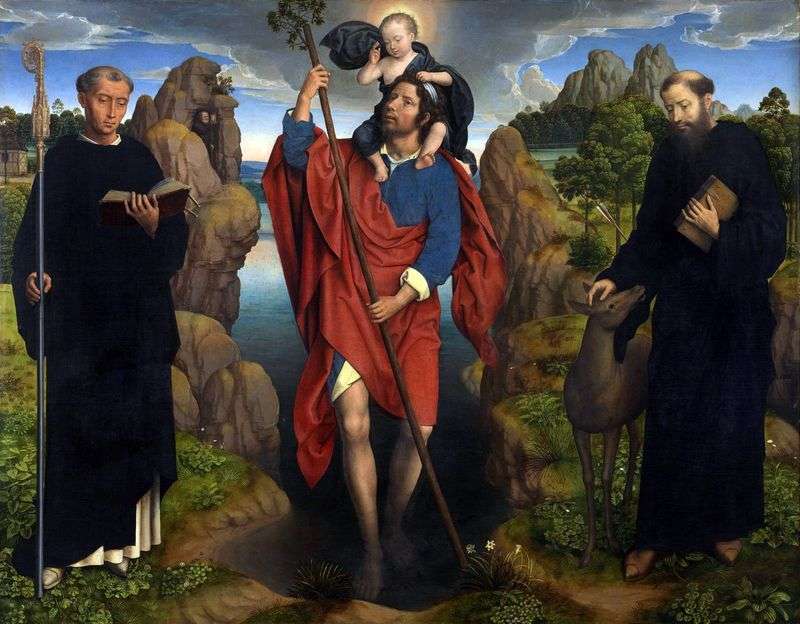 Saint Christopher by Hans Memling
Saint Christopher by Hans Memling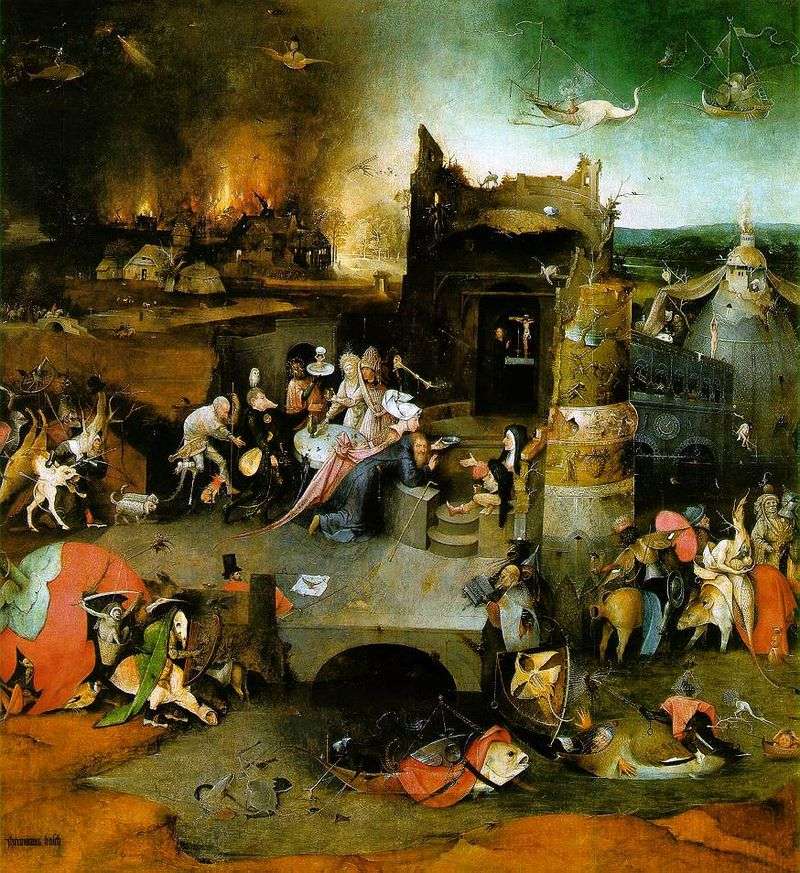 The altar of St. Anthony. The central part of the triptych is Hieronymus Bosch
The altar of St. Anthony. The central part of the triptych is Hieronymus Bosch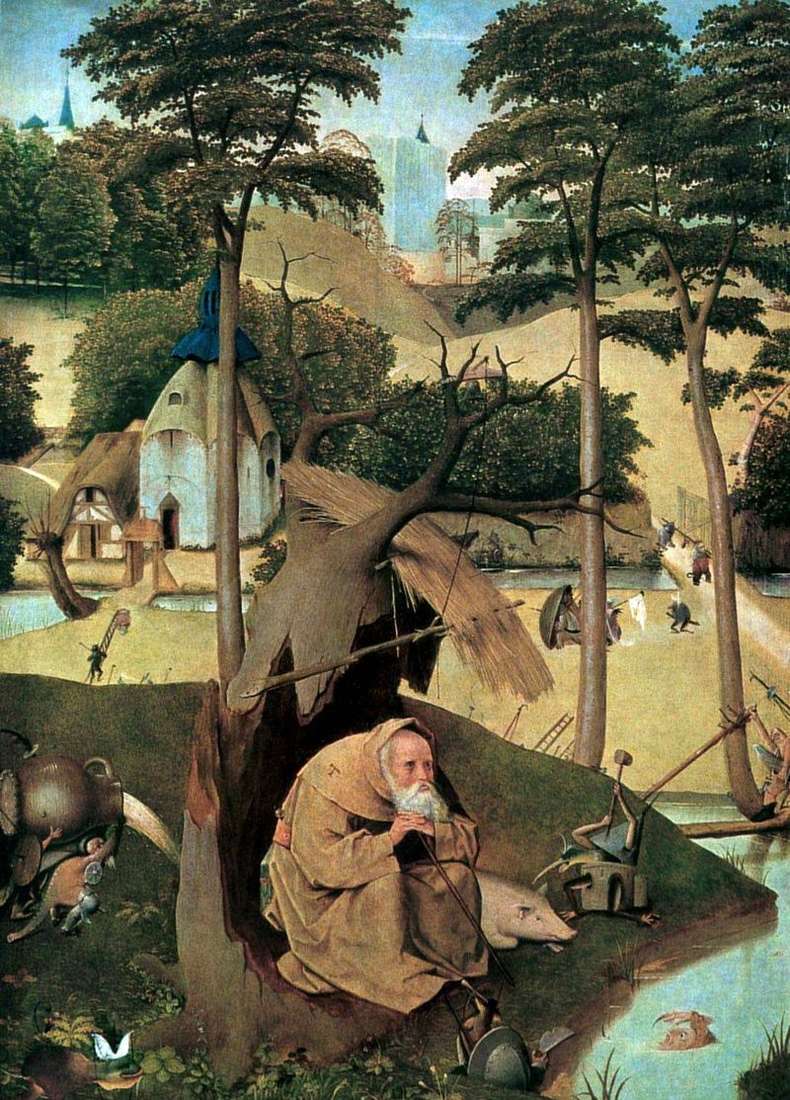 Saint Anthony by Hieronymus Bosch
Saint Anthony by Hieronymus Bosch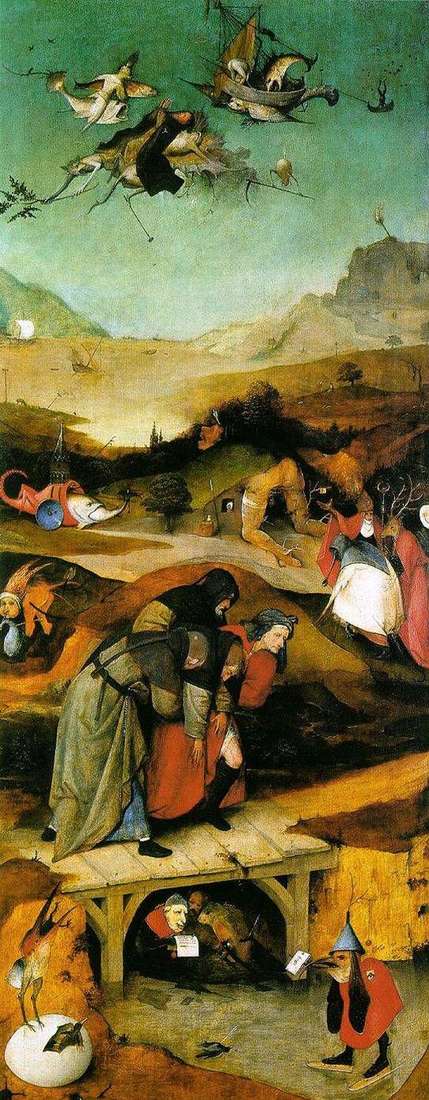 The flight and fall of Saint Anthony. The left wing of the triptych by Hieronymus Bosch
The flight and fall of Saint Anthony. The left wing of the triptych by Hieronymus Bosch Marriage in Cana of Galilee by Hieronymus Bosch
Marriage in Cana of Galilee by Hieronymus Bosch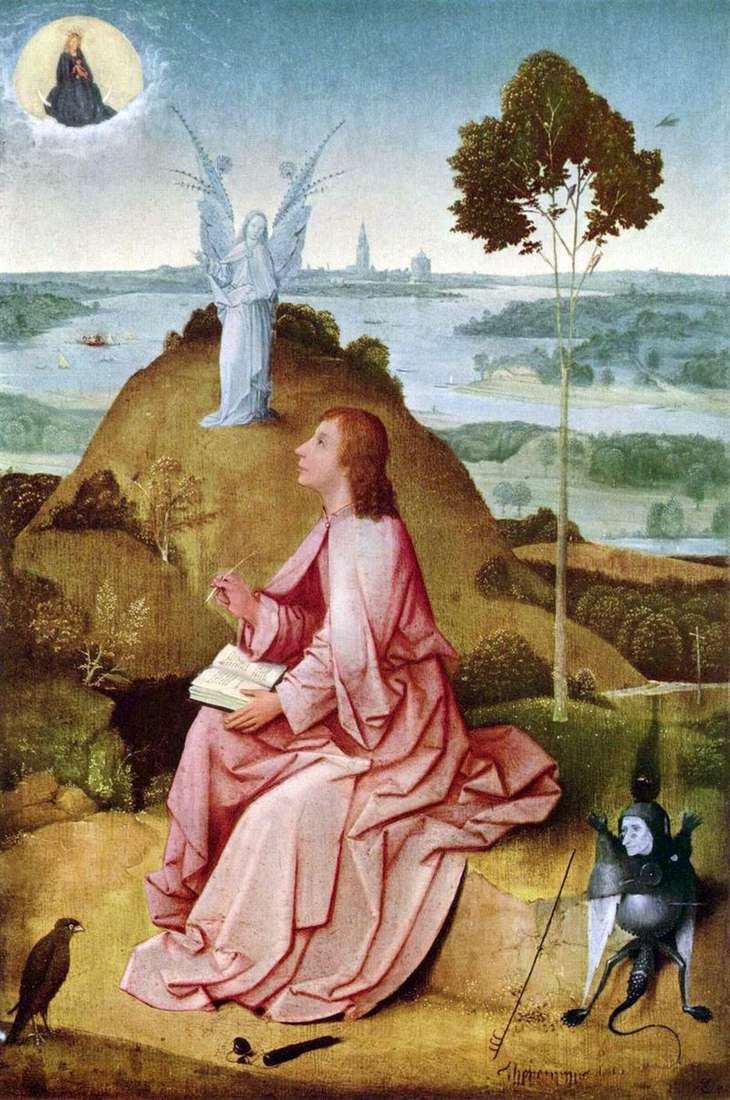 St. John the Evangelist on the island of Patmos by Hieronymus Bosch
St. John the Evangelist on the island of Patmos by Hieronymus Bosch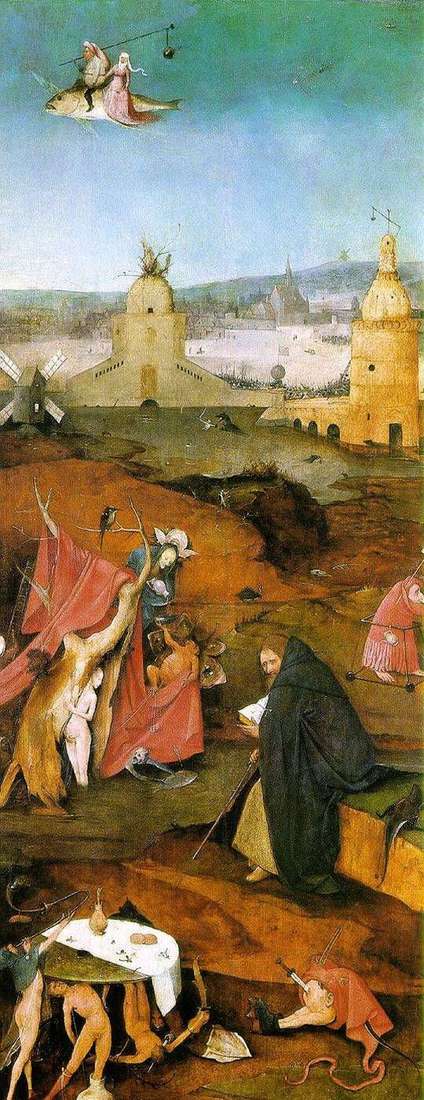 Visions of St. Anthony. The right wing of the altar by Hieronymus Bosch
Visions of St. Anthony. The right wing of the altar by Hieronymus Bosch Saint Christophe – Jérôme Bosch
Saint Christophe – Jérôme Bosch